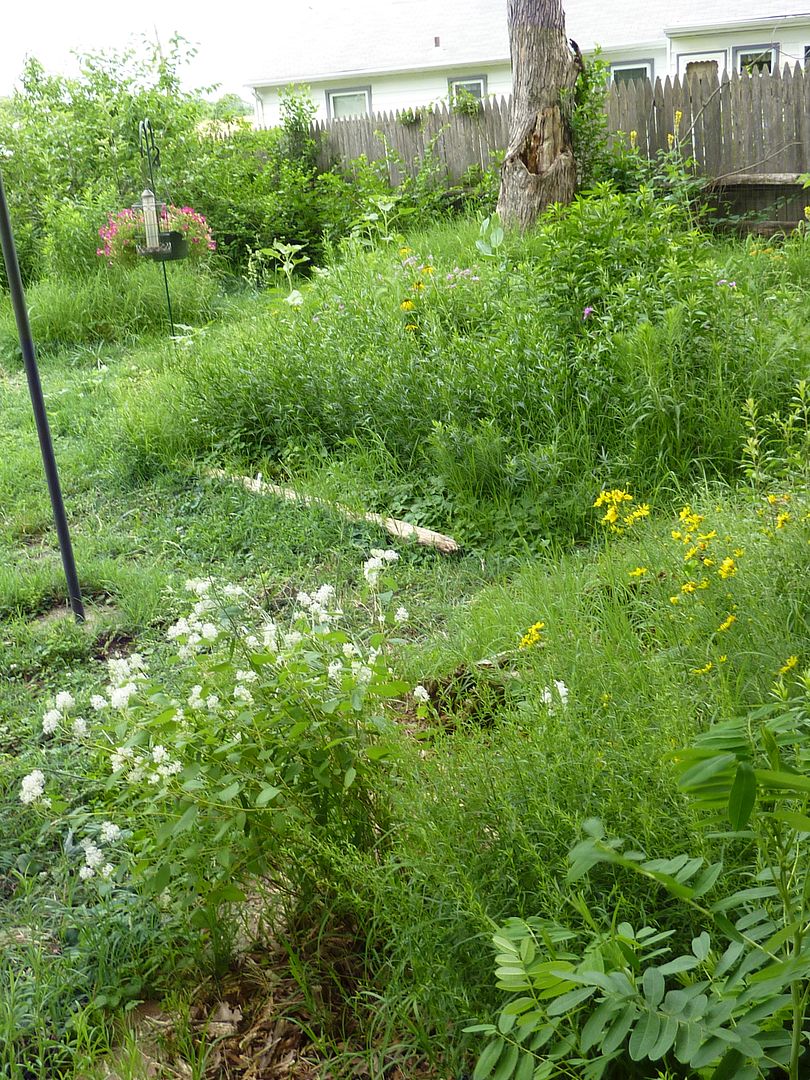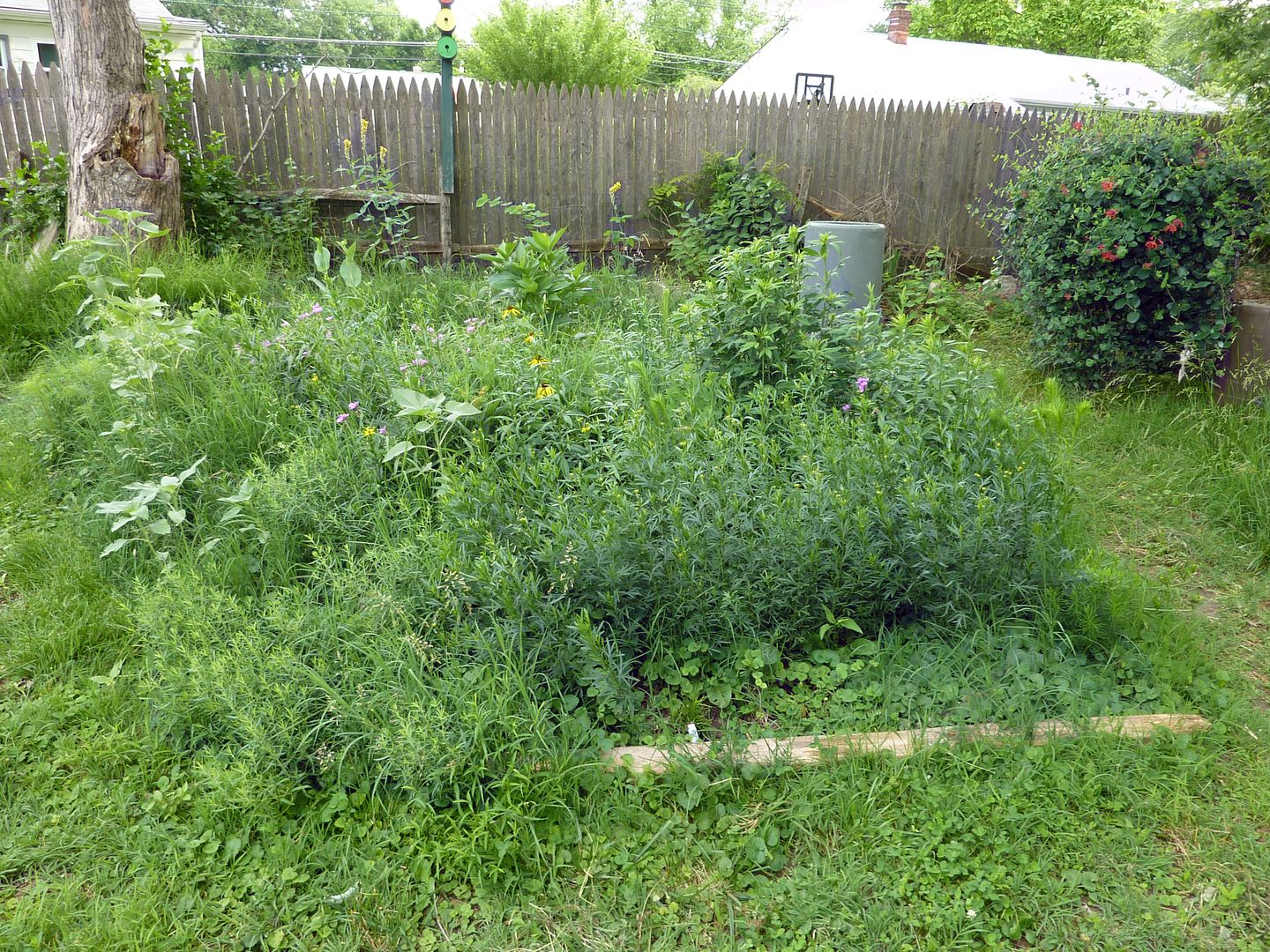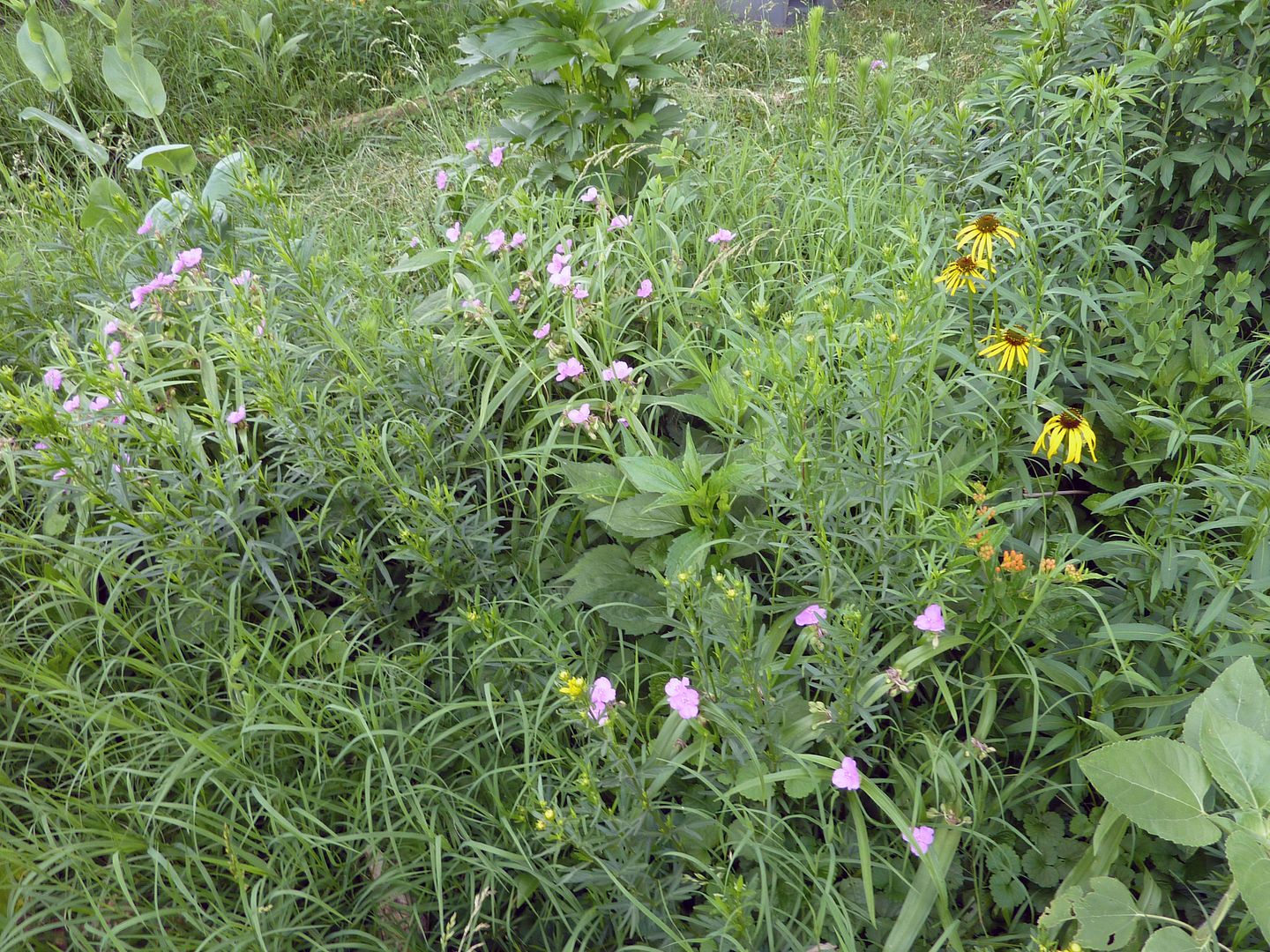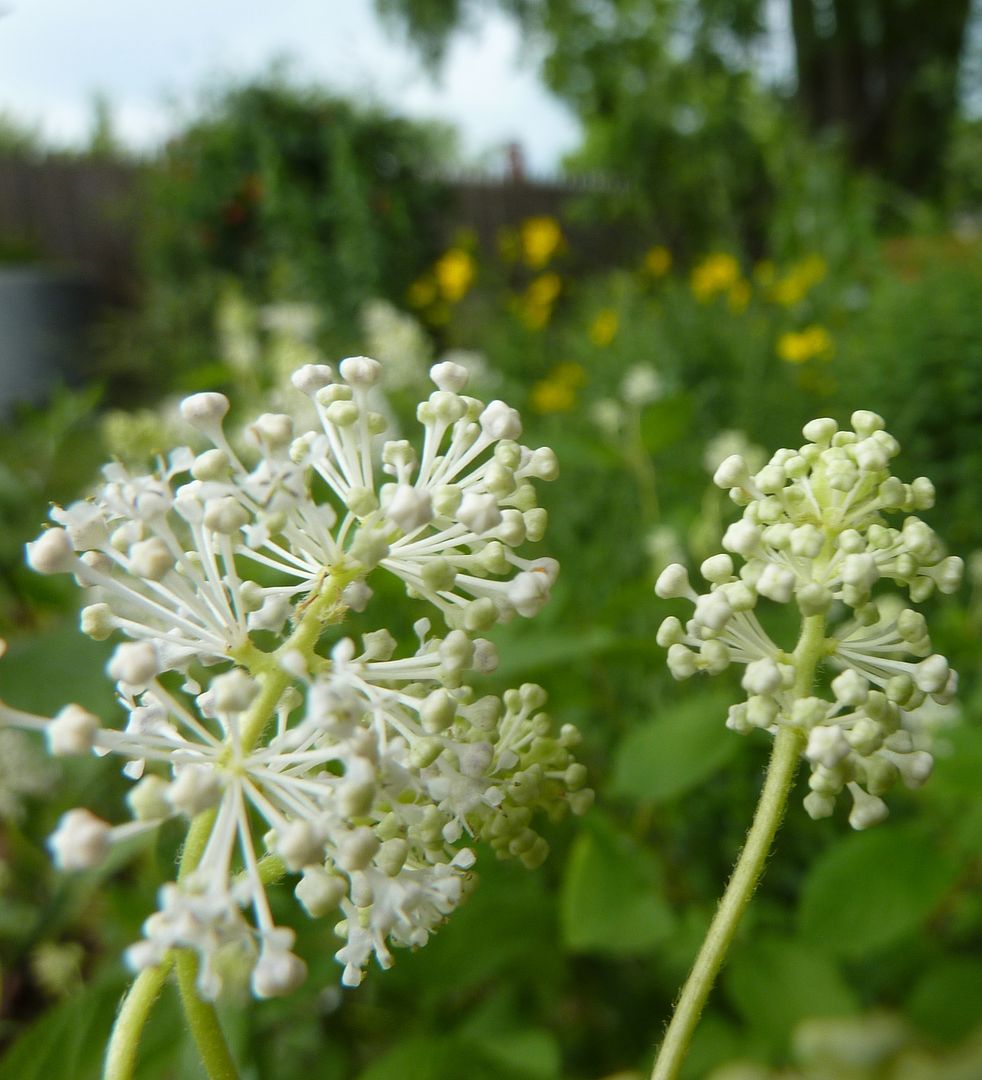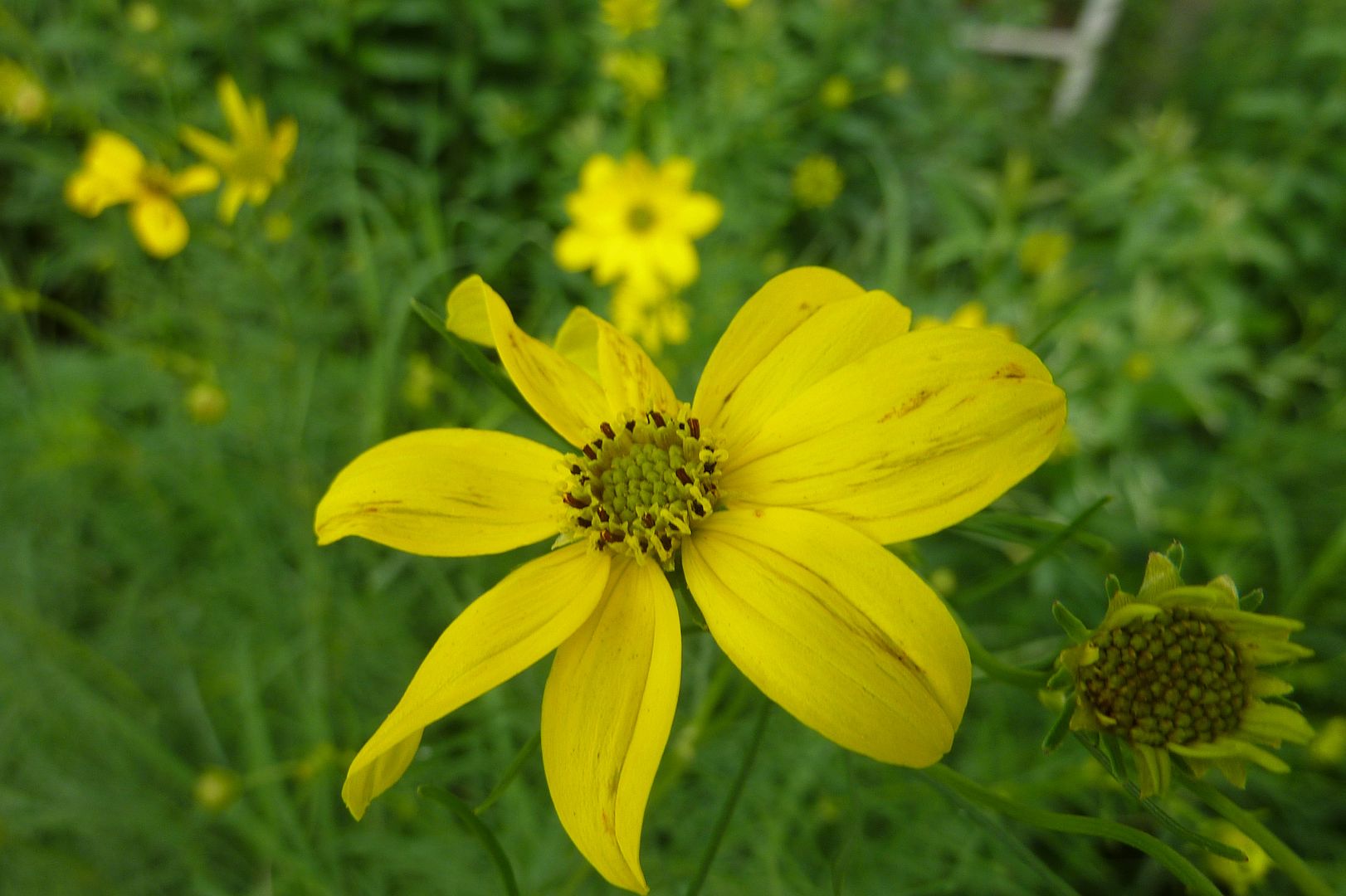Being the compulsive plant shopper that I am, I'm so thrilled with the way the meadow garden has turned out this year. I started this project back in 2011, and they say it takes three year before a meadow really takes off. What's odd though is they say that about meadows started by seed because nothing really flowers until year two or three and then some don't flower until year seven or beyond. Meadows otherwise look like a bunch of weeds their first, and sometimes second year.
Another reason seeds wouldn't have worked was that my lawn is basically made up of crab grass, which my dad "thinks" he may have planted on purpose years ago becuase it naturally spreads by runners and fills in an area. His theory being that this would lead to a nice thick lawn. While many lawn grasses do this, this crab grass in particular is the most annoying plant I've ever had to deal with. Along the roots it produces corms that are thorn shaped thus pulling them out of the ground often results in me being stabbed and pricked in uncomfortable ways.
To it's benefit though, it does fill in, my meadow is lacking grasses, and it basically marks where I haven't planted things yet.
So here's a short list of what's blooming now.
New Jersey Tea, Ceanothus americanus, which is actually a low 3' tall shrub that's covered in little white puffs of flowers. This is the only plant I need to remember not to mow over with the lawn mower each year and it's bright yellow stems really make it stand out. It's often praised as a good hummingbird plant, not because of the flowers, but because of the swarms of tiny bugs that go for the flowers. It's taken three years but sure enough I'm starting to see in the late afternoon this plant is bustling with tiny gnat-like insects. I haven't seen hummingbirds going for them yet but I'm sure it's only a matter of time. During the hotter times of the day nonsocial wasps tend to pollinate it. These types of wasps are beneficial because they're often specialized predators or parasites of beetle grubs, spiders, and caterpillars.
Whorled or Thread-leaf Coreopsis, Coreopsis verticillata, is growing right behind it. It doesn't get that much attention but I'm sure that may change in a few years. This started out as one plant, that is to say one stem that grew up to about 3' tall and produced maybe four flowers in it's first year. It's since reseeded in a non-aggressive way onto adjacent bare soil. This was the first of my native plants that I realized was not only growing happily but also self seeding around. Before then there had been this fear that maybe I'll rip up the lawn, plant everything, but only to watch it all die out slowly over the next ten years. This plant cured me of that fear.
Butterfly Weed, Asclepias tuberosa, these flowers are now open but I thought it was a neat shot. This is the host plant to the Monarch Butterfly among a few other things we don't hear enough about. Drought tolerant, loves growing in dry locations, and boasts brilliant orange flowers.
Ozark Coneflower, Echinacea paradoxa, this was a surprise this year because I'd planted this species a year or two ago and it died out. Coneflowers have never done well in my meadow and I'm not sure why that is. So this year I ordered Pale Purple Coneflower, Echinacea pallida, to give that species a try. Well what arrived grew better than anything had before, and when I saw the flower buds I was thrilled... but then the petals were yellow! So so one of the nurseries I ordered Pale Purple Coneflowers had mix up and they'd sent me Ozark Coneflower instead.
I'm not complaining. These plants seem to be a lot healthier than the first batch of Ozark Coneflowers I tried years ago. I initially wanted that species because the yellow went so well with the orange Butterfly Weed. We'll see if these are better able to establish.
